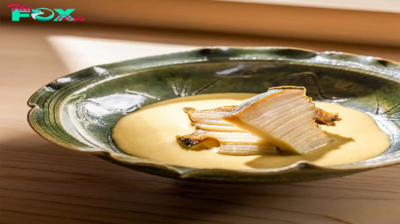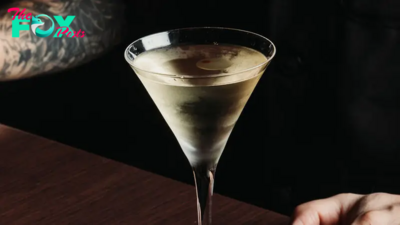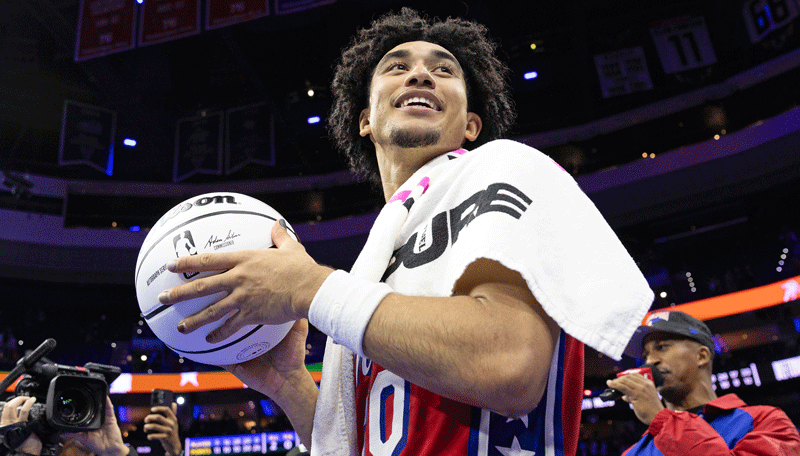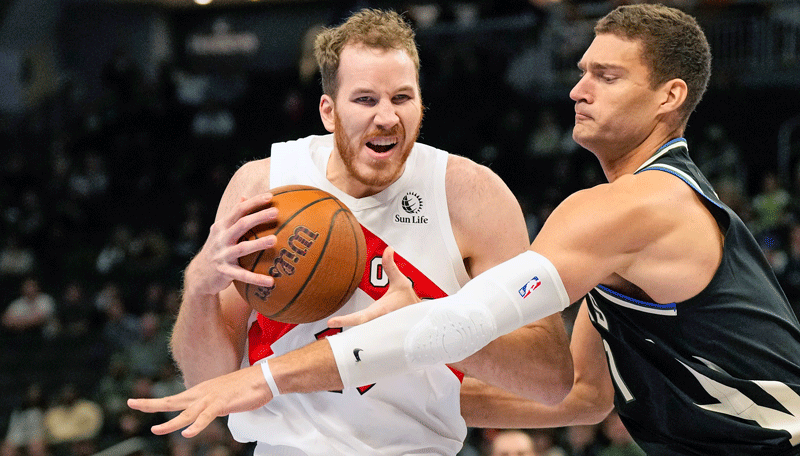Lifestyle
Wild Weather Brings A Fresh Approach
Climate change has taken a toll in Champagne, just as it has in other wine regions, but producers have learned to adapt and roll with the changes in the weather to create some unforgettable offerings. CLAIRE NESBITT and JAMES SUCKLING report for JamesSuckling.com
In small bright green- and blue-painted 1970s canvas-roofed Citroën Meharis, eight champagne grower-producers and three tasters from the JamesSuckling.com team navigated bumpily through the damp vineyards of the Côte des Blancs in Champagne. We were in the 33-hectare grand cru vineyard of Chétillon in Le Mesnil-sur-Oger, one of the most famous villages for chardonnay in the region. During various stops along the damp dirt roads, the growers explained the unique chalky soils and microclimates of their parcels as the group walked through the rows of chardonnay vines. The 2024 growing season so far had seen constant precipitation, with close to two years’-worth of rainfall in the last nine months. Producers said they’d been spraying their vineyards as often as twice a week, and the effects of mildew on some of the vines could already clearly be seen in the form of yellow and brown spots on the leaves, as well as grey or shrivelled brown berries within the small green grape bunches. They spoke about the difficult start and worried about a much lower yield in 2024, yet they remained positive about the ability of their Chétillon vines to deal with the wet weather.

The damp vineyards of the Côte des Blancs in Champagne 
Navigating through the 33-hectare
grand cru vineyard of Chétillon in Le Mesnil-sur-Oger
“It rained last night, and we can already walk here,” said Rodolphe Péters, the winemaker for Champagne Pierre Péters, the winemaker for Champagne Pierre Péters, which owns three plots of old vines in Chétillon, from which he’s been producing a single-vineyard champagne for the last 50 years.
“The top terroirs are seated on chalk, because of chalk’s regulating role,” Péters said of the ability of Champagne’s chalky soils to absorb and release both water and heat. The terroir of Chétillon, he added, has less than a metre of topsoil sitting atop hundreds of metres of free-draining chalk.
That morning, James Suckling, Aldo Fiordelli and I tasted more than two dozen vintage single-vineyard Chétillon wines from eight independent producers, from 2019 – one of the best vintages in the last 20 years, according to Péters – back to 1995. No matter how the wines were vinified, there was an electric sensation on the palate for all of them – whether it was Pierre Moncuit’s reductive, long-ageing method, Robert Moncuit’s barrique-iNFLuenced, earlier- release style, or Champagne De Sousa’s minimal-intervention approach from biodynamically farmed vines.
“You have this kind of minerality, salinity that you find in the wine,” said Marie Charlemagne, the winemaker at Guy Charlemagne. Its magnum bottling of Chétillon from the powerful 2008 vintage showed incredible freshness, as did the chalky, spicy and salty Pierre Moncuit Champagne Nicole Vieille Vigne 2008, which was made from 90-year-old chardonnay vines in Chétillon. The highlight of the tasting was Pierre Péters’ Champagne Les Chétillons Cuvée Speciale 2012, a wine with tightness, persistence and incredible complexity.
Although still not widely available, single-vineyard champagnes are certainly worth seeking out. Alongside the single- vineyard Chétillon blanc de blancs wines that wowed us in this report, single-parcel bottlings of pinot noir that impressed included the Philipponnat Champagne Les Cintres 2012, Jacquesson Champagne Dizy Terres Rouges 2014 and Marguet Champagne La Grande Ruelle 2019, as well as a poised and elegant meunier bottled only in magnum – the Christophe Baron Champagne Les Alouettes 2019.
Moreover, still wines in Champagne, called Coteaux Champenois, are equally compelling and several are noted as single vineyards. Many of the top wines are from recent warm vintages, such as 2020 and 2022, but some are from 2021, a vintage that saw close to a 50 percent reduction in yield across Champagne due to spring frosts and downy mildew.
We wondered last year whether a warming climate could mean a return to still wines. The production of still wine reached 4,000 hectolitres in 2023, and although that’s still a very small volume compared with sparkling wine, several producers we spoke to have started bottling small amounts of Coteaux Champenois in the last 10 years. “It would be a shame not to try to make Coteaux Champenois,” said Pierre Moncuit winemaker Valerie Charpentier. “It’s better to do it now than 20 years ago.” “There’s definitely bigger potential with climate change,” agreed Valentin De Sousa of Champagne De Sousa, which in 2020 began releasing a limited production of still wine. “It’s not Burgundy wine and it’s not Champagne. It’s totally different.”
We rated 14 Coteaux Champenois 96 points or above, but we recommend knowing the producer rather than taking a gamble, as we did with a natural-style red Coteaux Champenois in a wine bar in Epernay that we found somewhat disappointing.
“The problem is a lot of people make Coteaux Champenois without the know-how, so it damages the image of Coteaux Champenois,” said Sebastien Le Golvet, who made an excellent, stunningly mineral pinot noir, the Henri Giraud Coteaux Champenois Rouge Grand Cru Cuvée des Froides Terres 2019. Other top red and white still wines include those from Bereche & Fils, Domaine RH Coutier, Domaine Carre Freres, Egly-Ouriet, Benoît Lahaye and Larmandier-Bernier.
The future of chardonnay, particularly in the chalky subregion of the Côte des Blancs, is shining brightly, according to producers we spoke to during our week-long visit. And though the blanc de blancs style of champagne (strictly made from white grapes, usually pure chardonnay) appears richer than in the past, the wines we tasted retain plenty of freshness.

Chardonnay vines in Chétillon
Champagne
Cuvée 3A from 2014 to 2022
Moncuit Cellars
Four of our top six wines this year are blanc de blancs, including Billecart-Salmon Champagne Cuvée Louis Salmon Blanc de Blancs Brut 2012, which is electrifying, mouthwatering and driven, with very fine and silky bubbles. It’s on par with Pierre Péters Champagne Les Chétillon Blanc de Blancs Cuvée Speciale 2012, as is Taittinger Champagne Comtes de Champagne Blanc de Blancs 2013, the latest release of the house’s top cuvée – a long, sleek and mineral champagne that’s now more expressive than when we tasted it pre-release last year, with plenty of tension and precision.
Taittinger’s Comtes de Champagne Brut Rosé 2012, to be released toward the end of this year, is just as stunning, very precise and seamless, with a chalky, oyster shell-like minerality. 2012 and 2013 were two back-to-back great vintages. 2012 made expressive and balanced wines, while 2013 was a long-ripening, cool vintage – one of few in the last couple of decades with an October harvest – resulting in wines with laser-sharp acidity and tension.
A more recent late-ripening vintage that impressed us in our tastings was 2016. “I think 2016 has enormous potential,” said Sebastien Le Golvet, the cellar master at Henri Giraud, who compared it to 1996. “It was a good year for everyone. It’s elegant, it has ripeness, but acidity and tension. I think it’ll be a vintage we can drink or keep.”
The Henri Giraud Champagne Argonne Brut 2016 is a powerful and driven yet elegant blend of pinot noir with some chardonnay from the grand cru village of Aÿ, all aged and fermented in new oak barrels. It’s the best we’ve tasted since the 2012. Over the last decade, aside from 2016 and 2019, champagne growers and producers have grown accustomed to challenges in the vineyard that are habitually faced in warmer wine-growing regions. “The new challenge is deciding when to pick the grapes in earlier [-ripening] years,” Panaiotis said. In warmer years, grapes accumulate sugar and lose acidity (physiological ripening) more rapidly than they achieve aroma and tannin ripeness in the skins (phenolic ripening).
“2019 was the last vintage we had perfect synchronisation of phenological and physiological maturity,” Panaiotis added. “In a dry year like 2015, and the warm 2022, how long can you wait? You can’t end up with crazy sugar and low acidity.” Other winemakers are positive about future vintages, even hot and dry ones, and despite the recent decline in the global champagne market, most small producers said sales were still strong. “I’m happy with our sales,” said Péters, who organised the Chétillon tasting, not to mention the ’70s Meharis in which we toured the vineyards. “And I think that 2019 is the vintage of my career!”
-

 Lifestyle39m ago
Lifestyle39m agoLiam Paynes ex Cheryl and Simon Cowell have had a tumultuous relationship, with the former X Factor judge famously being sacked by the music mogul.cau
-

 Lifestyle40m ago
Lifestyle40m agoLiam Paynes mother cried: I dont know who to blame but I will not let my son die like this, Katie Cassidy, pay for what you have done, I will.cau
-

 Lifestyle2h ago
Lifestyle2h agoThe price of freedom | The Express Tribune
-

 Lifestyle2h ago
Lifestyle2h agoBadshah breaks silence on Hania Aamir relationship rumors | The Express Tribune
-

 Lifestyle5h ago
Lifestyle5h agoBrad Pitt’s Daughter Was Shocked When She Shared: When I Was 17, My Dad Didn’t Protect Me And Finally Saw Diddy Pushing Me And Forcing Me To…Linh
-

 Lifestyle5h ago
Lifestyle5h agoKim Kardashian Reacts Strongly After Diddy Leaks Controversial Photos.Linh
-

 Lifestyle7h ago
Lifestyle7h agoAbhishek Bachchan talks about fatherhood after missing daughter Aaradhya's birthday | The Express Tribune
-

 Lifestyle7h ago
Lifestyle7h agoMohini Dey responds to rumours linking her to AR Rahman’s divorce | The Express Tribune
































